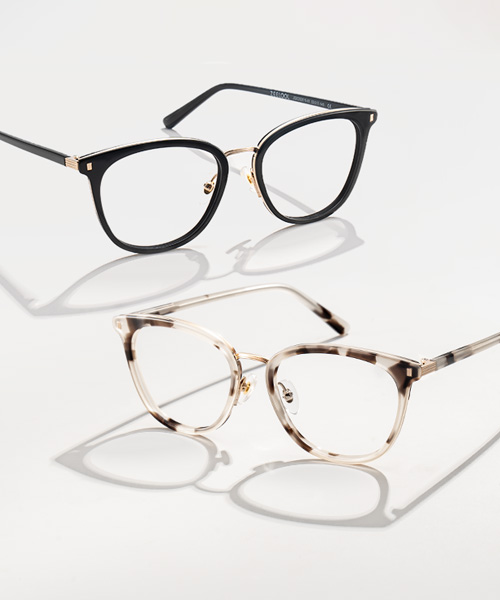
Photochromic Glasses
Automatically adapt to changing light, dark outdoors and clear indoors
Photochromic Lenses
Photochromic lenses automatically adjust to changing light conditions, darkening in sunlight and clearing up indoors for optimal vision in any environment.

How Do Photochromic Lenses Work?
Photochromic lenses have light-sensitive molecules that shift their structure when combined with UV light, allowing them to easily adapt to changing light conditions. When this light is absorbed, the lenses darken. Away from the sunlight, the process reverses, and the lenses become clear again.
Why Photochromic Lenses?

Cost-Effective Solution
A versatile two-in-one design that combines prescription eyewear and sunglasses, eliminating the need for separate pairs and offering excellent value.

Seamless Convenience
Automatically adjusts from clear indoors to tinted outdoors, ensuring a smooth transition without the need to change glasses.

Versatile for Active Lifestyles
Quickly adapts to varying light conditions, making it perfect for outdoor activities, driving, and sports, while maintaining clarity and comfort.

Comprehensive UV Protection
Blocks 100% of harmful UV rays, delivering the same level of sun protection as sunglasses without the added hassle.
Photochromic Lenses for Every Lifestyle

Seamless Transition from Indoors to Outdoors

Protection from Changing Light Conditions

Adapting to Varying Outdoor Brightness
Customize Your Photochromic Lenses
Step 1 :
Choose your frame
Step 2 :
Verify your prescription
Step 3 :
Customize your glasses with photochromic lenses
Glasses with Photochromic Lenses
Photochromic lenses automatically adjust to light changes, providing seamless vision from indoors to outdoors with full UV protection and glare reduction.
Filters
gender
price
shape
color
prescription
material
size
gender
price
shape
color
prescription
material
size
FAQ
What are Photochromic Lenses?
Photochromic lenses are glasses lenses that react to different levels of UV light. When exposed to bright light on a sunny day, molecules in the lens react and become darker, offering protection from the sun’s radiation. As light levels decrease, the molecules go back to their original state and become transparent once again. Photochromic lenses only react when exposed directly to UV light, meaning that in the office or home environment, they will remain clear.
How do photochromic lenses work?
Photochromic lenses are coated with special molecules, such as silver chloride, that change shape and absorb light when exposed to UV rays. It is this reaction that causes them to darken in sunlight. When taken away from UV light, the process reverses, causing the lenses to gradually become lighter.
Will temperature affect my photochromic glasses?
Temperature can affect how quickly photochromic lenses change, but UV light remains the main factor. In colder conditions, the lenses may take longer to darken, while warmer temperatures can speed up the process. Extreme temperatures might slightly alter the tint, but UV exposure is what truly controls how dark or light the lenses become.
Do photochromic lenses work in the car?
Photochromic lenses are primarily designed to react to UV light, but they do offer some blue-light filtering. While UV and blue-light are different, blue-violet light, which is high-energy and close to UV, can be partially blocked by these lenses. Photochromic lenses can help reduce exposure to blue-light from the sun and digital devices, which can cause eye strain. However, they are not as effective as lenses specifically designed for blue-light protection. For better comfort during extended screen time, consider lenses labeled as "blue-light blocking" or "blue blockers." Lenses with an index higher than 1.57 tend to offer better blue-light filtering.
Does photochromic include blue-light?
For the photochromic lenses whose index level is over 1.57, the blue-light blocking function is included excluding the 1.61 high index pro.
If you want transitional lenses with a blue-light blocking function, please choose the new-generation transitional lenses. For frame price that is over $20, we will provide the new-generation transitional lenses.What is the difference between photochromic lenses and Transitions ® lenses?
Photochromic vs. Transition Lenses: Differences & Similarities
Photochromic lenses darken in response to ultraviolet (UV) rays so you can spend time outdoors comfortably without glare. Transitions® with a capital 'T' is a brand name of a type of photochromic lens. So, all Transitions® are photochromic, but not all photochromic lenses are Transitions®.






















